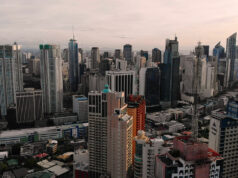SAN MIGUEL Corp. (SMC) said it reopened last Sunday the Skyway Alabang Toll Plaza southbound entry, less than two weeks after it was closed to motorists due to the ongoing construction of the P10-billion Skyway Extension Project.
“Less than two weeks after it was closed on May 28, the South Luzon Expressway (SLEx) Alabang southbound entry reopened on June 7—eight days ahead of schedule,” SMC said in a statement e-mailed to reporters on Monday.
SMC decided to close the toll plaza entry to allow SLEx contractors to carry out bored piling works for the construction of the Skyway Extension Project.
SMC President and Chief Operating Officer Ramon S. Ang was quoted as saying: “We want to assure the motoring public and the government that the Skyway Extension Project will be finished at the soonest possible time. This is to demonstrate our commitment to continue to improve our facilities and services — no matter what the situation or circumstance is.”
SMC resumed the construction of the Skyway extension on May 15.
Public and private construction projects had been allowed to resume under the more relaxed community quarantine but workers must be housed and fed onsite and observe physical distancing rules, among other requirements for construction work during the pandemic.
SMC said on May 27 that the completion of the project, which was halted by two months due to the government-imposed enhanced community quarantine, might be slightly delayed.
“The project’s original target completion date was December 2020, but the two-month delay is likely to push this back a little,” the company said in a statement.
The project aims to extend the Skyway from Susana Heights in SLEx to Sucat and back and provide direct access to the elevated section of the Skyway. Construction of the four-kilometer elevated viaduct started in June last year.
Once completed, the project’s three new northbound lanes will be able to accommodate an additional 4,500 vehicles per hour. The two additional southbound lanes will be able accommodate an additional 3,000 vehicles per hour. — Arjay L. Balinbin



